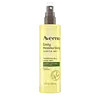What's inside
What's inside
 Key Ingredients
Key Ingredients

 Benefits
Benefits

 Concerns
Concerns

 Ingredients Side-by-side
Ingredients Side-by-side

Water
Skin ConditioningHamamelis Virginiana Water
AstringentAlcohol
AntimicrobialGlycerin
HumectantSd Alcohol 1
AstringentSodium Polyitaconate
Sr-Hydrozoan Polypeptide-1
HumectantJasminum Officinale Extract
MaskingCaffeine
Skin ConditioningCucumis Sativus Fruit Extract
EmollientMagnesium Ascorbyl Phosphate
AntioxidantLavandula Angustifolia Flower/Leaf/Stem Extract
MaskingChamomilla Recutita Flower Extract
MaskingCamellia Sinensis Extract
AntioxidantArnica Montana Flower Extract
MaskingAllantoin
Skin ConditioningSorbitan Oleate Decylglucoside Crosspolymer
CleansingSodium Benzoate
MaskingPhenoxyethanol
PreservativeEthylhexylglycerin
Skin ConditioningParfum
MaskingWater, Hamamelis Virginiana Water, Alcohol, Glycerin, Sd Alcohol 1, Sodium Polyitaconate, Sr-Hydrozoan Polypeptide-1, Jasminum Officinale Extract, Caffeine, Cucumis Sativus Fruit Extract, Magnesium Ascorbyl Phosphate, Lavandula Angustifolia Flower/Leaf/Stem Extract, Chamomilla Recutita Flower Extract, Camellia Sinensis Extract, Arnica Montana Flower Extract, Allantoin, Sorbitan Oleate Decylglucoside Crosspolymer, Sodium Benzoate, Phenoxyethanol, Ethylhexylglycerin, Parfum
 Reviews
Reviews

Alternatives
Ingredients Explained
These ingredients are found in both products.
Ingredients higher up in an ingredient list are typically present in a larger amount.
Parfum is a catch-all term for an ingredient or more that is used to give a scent to products.
Also called "fragrance", this ingredient can be a blend of hundreds of chemicals or plant oils. This means every product with "fragrance" or "parfum" in the ingredients list is a different mixture.
For instance, Habanolide is a proprietary trade name for a specific aroma chemical. When used as a fragrance ingredient in cosmetics, most aroma chemicals fall under the broad labeling category of “FRAGRANCE” or “PARFUM” according to EU and US regulations.
The term 'parfum' or 'fragrance' is not regulated in many countries. In many cases, it is up to the brand to define this term.
For instance, many brands choose to label themselves as "fragrance-free" because they are not using synthetic fragrances. However, their products may still contain ingredients such as essential oils that are considered a fragrance by INCI standards.
One example is Calendula flower extract. Calendula is an essential oil that still imparts a scent or 'fragrance'.
Depending on the blend, the ingredients in the mixture can cause allergies and sensitivities on the skin. Some ingredients that are known EU allergens include linalool and citronellol.
Parfum can also be used to mask or cover an unpleasant scent.
The bottom line is: not all fragrances/parfum/ingredients are created equally. If you are worried about fragrances, we recommend taking a closer look at an ingredient. And of course, we always recommend speaking with a professional.
Learn more about Parfum